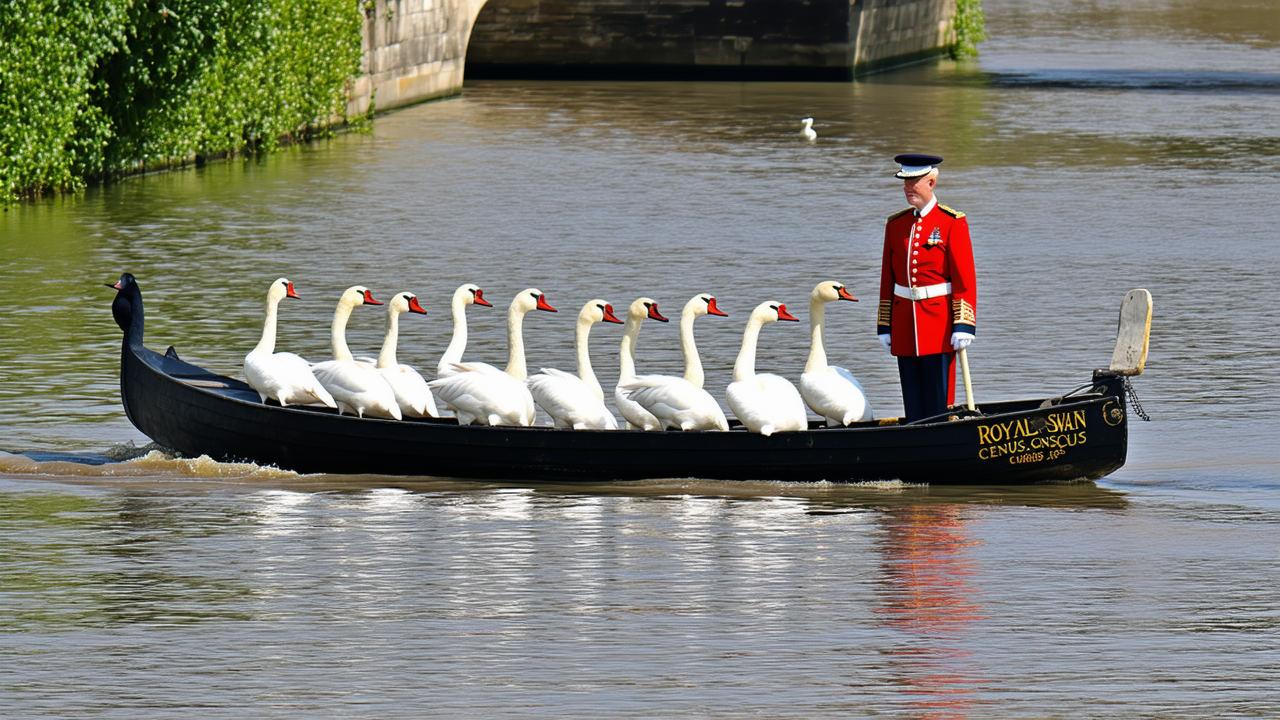King Charles III's Annual Swan Census Begins on the River Thames
King Charles III's Annual Swan Census Begins on the River Thames
The ancient tradition of Swan Upping, a unique and historic event involving the British monarch, has commenced on the River Thames, marking the start of a five-day census to assess the health of the country’s mute swan population.
Scarlet uniforms flashed against the riverbank. Wooden skiffs glided in formation. A young swan, gently lifted from the water, was measured, inspected, and released. This is the scene that unfolds each year as the annual swan census, known as Swan Upping, begins on the River Thames under the patronage of King Charles III.
One of the British monarch’s less-known titles is Seigneur of the Swans — Lord of the Swans — and according to ancient lore, he or she owns all members of the mute swan species found in Britain’s open waters. This title, rooted in centuries of tradition, has given rise to the unique practice of Swan Upping.
Every year, a team of carefully selected oarsmen, known as Swan Uppers, are tasked with finding the swans on a stretch of the Thames. When a family is spotted, they shout, “All up!” and the boats quickly surround the birds, marking them and checking for signs of disease or injury.
“It gives us an indication of what’s going on throughout the country,” said David Barber, who wears a scarlet jacket and a white swan feather in his cap and bears the title of King’s Swan Marker. “It’s a tradition, but I think it’s serving a very useful purpose as well.”
Barber has been leading the event for more than 30 years. He is accompanied by a vet and oarsmen dressed in three colors: red for the king, white for the Worshipful Company of Vintners and blue stripes for the Worshipful Company of Dyers. The last two are medieval London trade guilds that were granted ownership of some Thames swans in the 15th century.
The census tradition dates back to the 12th century, when swans were considered an important food for royal banquets and feasts. While swans are now legally protected from hunting, they face threats from disease, pollution, vandalism, and cruelty, Barber said.
Their numbers have declined over the last two years, primarily due to outbreaks of avian flu across Britain, he said, adding that only 86 young swans were found during last year’s Swan Upping, which was 45% fewer than the year before that.
But Barber appeared positive at the end of the event's first day, with a total of 16 young swans recorded. The census continues until Friday, traveling from Sunbury, on the outskirts of London, to Abingdon, 130 kilometers upstream.
